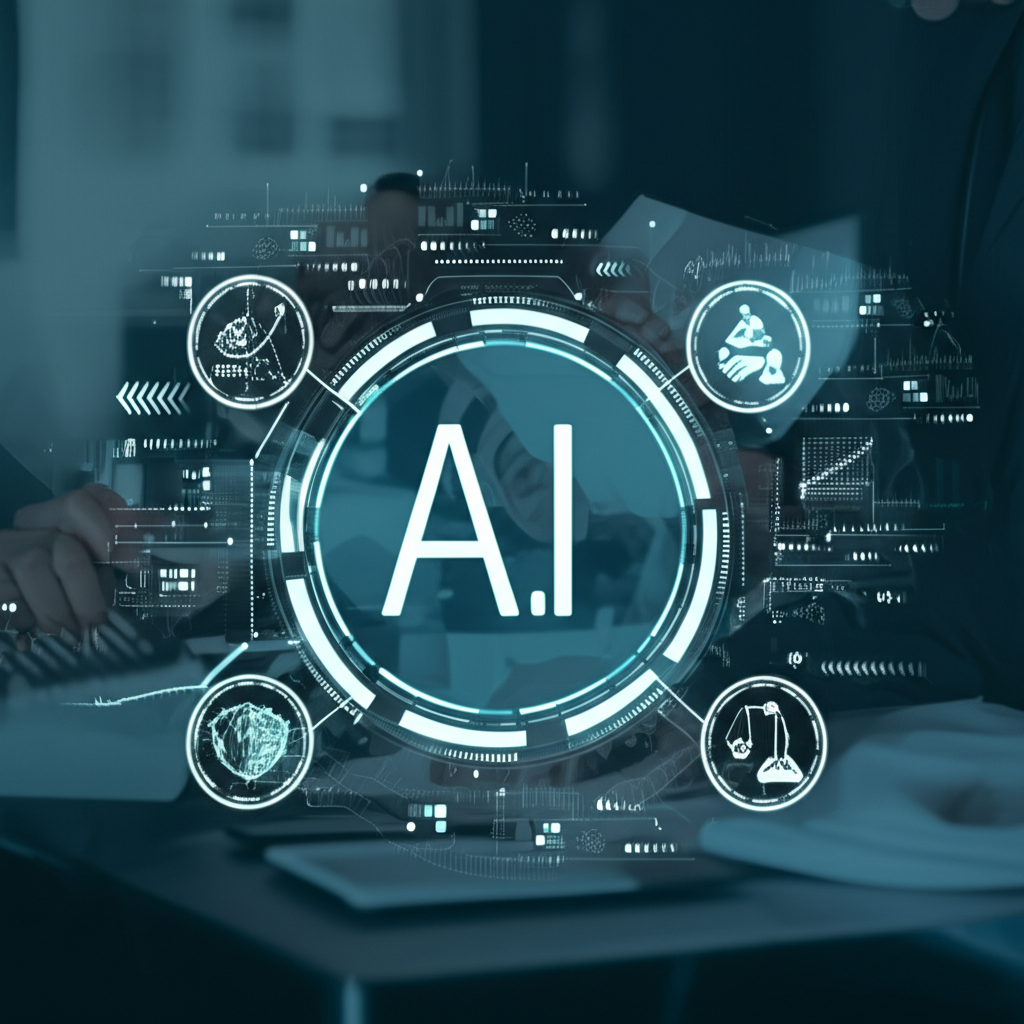How AI is Affecting European Legal Practice: Navigating the New Era of Legal Technology Under the EU AI Act
Estimated reading time: 7 minutes
- The EU AI Act mandates compliance measures that will significantly impact legal practice.
- Legal professionals must maintain oversight and documentation to comply with the new regulations.
- The reach of the AI Act extends beyond Europe, affecting global firms serving EU clients.
- Ethical considerations are paramount in utilizing AI, emphasizing human oversight.
- Firms need to adapt workflows to meet compliance while leveraging AI technology.
Table of Contents:
- The EU AI Act: A Revolutionary Framework Reshaping How AI is Affecting European Legal Practice
- Direct Consequences for Legal Professionals: Compliance, Ethics, and Operational Changes
- Operational Changes: Adapting Legal Workflows for the AI Age
- The Human Element: Maintaining Professional Judgment in an Automated World
- Governance and Enforcement: The New Regulatory Landscape
The EU AI Act: A Revolutionary Framework Reshaping How AI is Affecting European Legal Practice
At the heart of this transformation lies the EU AI Act (Regulation (EU) 2024/1689), which represents the world’s first comprehensive legal framework for AI. This groundbreaking legislation doesn’t merely suggest best practices—it mandates specific requirements that will fundamentally alter how law firms implement and use AI technologies.
The Act employs a sophisticated risk-based approach that categorizes AI systems into distinct levels, each with corresponding obligations:
- Unacceptable-Risk AI Systems are completely banned from use. These include applications involving biometric surveillance and social scoring systems that could infringe on fundamental rights. For legal professionals, this means certain AI tools that might have seemed attractive for client assessment or jury selection are now definitively off-limits.
- High-Risk AI Systems face the most stringent requirements, and many legal technology applications fall into this category. Document review platforms, contract analysis tools, and predictive analytics systems used in legal practice must now meet strict standards for transparency, human oversight, risk management, and documentation. Law firms using these technologies must maintain detailed records demonstrating compliance with transparency and accountability requirements.
- General-Purpose AI (GPAI) systems, including large language models that power many modern legal research and drafting tools, will face specific obligations beginning in August 2025. The European Commission is developing a Code of Practice to guide compliance for these versatile but potentially impactful systems.
Direct Consequences for Legal Professionals: Compliance, Ethics, and Operational Changes
The implementation of the AI Act creates immediate and tangible impacts on daily legal practice. Law firms and legal departments must now navigate a complex compliance landscape that affects everything from technology procurement to client service delivery.
The Compliance Burden
Legal professionals using AI for document review, contract drafting, or predictive analytics must now conduct comprehensive compliance assessments and maintain detailed oversight records. This isn’t a one-time exercise—ongoing monitoring and documentation are required to demonstrate continued compliance.
For IT professionals supporting legal operations, this means implementing new systems for:
- Tracking AI tool usage across the organization
- Documenting decision-making processes involving AI
- Maintaining audit trails for high-risk AI applications
- Ensuring data quality and bias monitoring procedures are in place
Extraterritorial Reach and Global Impact
Perhaps most significantly, the AI Act applies to any lawyer or firm serving EU clients, regardless of where they are based. This extraterritorial reach mirrors the GDPR’s global impact and means that law firms in London, New York, or Singapore must comply if they have European clients or process EU citizen data.
This global scope creates particular challenges for multinational firms that must navigate potential divergence between EU and non-EU AI regulations. Legal technology platforms and AI tools may need different configurations or features depending on the jurisdiction, adding complexity to already sophisticated systems.
Ethical Leadership in the AI Era
The Act compels legal professionals to lead on AI ethics, ensuring AI use aligns with transparency, accountability, and fundamental rights. This represents a significant shift from viewing AI as merely an efficiency tool to recognizing it as a technology requiring active ethical oversight.
Law firms must now consider:
- How AI decisions affect client outcomes and access to justice
- Whether AI tools perpetuate or mitigate existing biases
- How to maintain professional standards while leveraging automated systems
- Ways to ensure human judgment remains central to legal decision-making
Operational Changes: Adapting Legal Workflows for the AI Age
The practical implications of these regulatory changes are already reshaping how European law firms operate. From document management to client communications, every aspect of legal practice must be evaluated through the lens of AI compliance and best practices.
Workflow Adaptation and Integration
Firms must adapt workflows to integrate AI tools while meeting new regulatory standards. This isn’t simply about adding compliance checkboxes to existing processes—it requires fundamental rethinking of how AI fits into legal service delivery.
Consider a typical contract review process: Previously, a firm might deploy an AI tool to scan thousands of documents quickly, flagging potential issues for human review. Under the new framework, this same process requires:
- Documentation of the AI system’s risk classification
- Clear communication to clients about AI involvement
- Maintenance of human oversight protocols
- Regular audits of the AI’s performance and bias indicators
- Retention of records demonstrating compliance
AI for Compliance and Enforcement
Ironically, while AI creates new compliance obligations, it’s also becoming essential for meeting them. Both in-house legal teams and regulatory authorities are deploying AI for monitoring compliance, detecting fraud, and screening mergers. This creates a technological arms race where firms must use AI to comply with AI regulations.
Legal departments are implementing AI-powered tools for:
- Automated compliance monitoring across multiple jurisdictions
- Real-time detection of potential regulatory violations
- Predictive analysis of enforcement trends
- Document classification and retention management
Increased Regulatory Scrutiny
Legal technology providers and law firms face heightened regulatory scrutiny, especially for high-risk AI systems. This scrutiny extends beyond mere compliance checks to fundamental questions about how AI systems make decisions and whether those decisions align with legal and ethical standards.
Firms must now engage early with regulators, often before implementing new AI systems. This proactive approach helps identify potential compliance issues before they become enforcement actions, but it also requires significant time and resources from legal and IT teams.
The Human Element: Maintaining Professional Judgment in an Automated World
One of the Act’s most significant requirements is the mandate for human oversight in significant legal decisions. This requirement, which aligns with existing GDPR provisions, ensures that AI remains a tool to augment human judgment rather than replace it.
The Right to Explanation
Clients now have the right to understand the logic behind algorithmic decisions affecting them. For legal professionals, this means being able to explain not just what an AI system recommended, but how it arrived at that recommendation. This transparency requirement has profound implications for:
- Client communications and engagement strategies
- Documentation standards for AI-assisted work
- Training requirements for legal professionals using AI tools
- Selection criteria for AI vendors and platforms
Balancing Efficiency and Oversight
While AI promises significant efficiency gains, the human oversight requirement means firms can’t simply automate processes and walk away. Instead, they must design systems that leverage AI’s capabilities while maintaining meaningful human control. This balance requires careful consideration of:
- Which tasks can be fully automated versus those requiring human review
- How to structure review processes to catch AI errors or biases
- When to override AI recommendations based on professional judgment
- How to document human involvement in AI-assisted decisions
Governance and Enforcement: The New Regulatory Landscape
The EU has established robust governance structures to oversee AI compliance, with the European AI Office and the European Artificial Intelligence Board now active in overseeing compliance and implementation.
FAQ
What is the EU AI Act?
The EU AI Act is the world’s first comprehensive legal framework for artificial intelligence, set to take full effect from mid-2025, providing specific guidelines and compliance obligations for AI technology use.
Who does the EU AI Act apply to?
The Act applies to any lawyer or firm serving EU clients, regardless of where they are based, similar to the regulations established by the GDPR.
What are the consequences of non-compliance with the EU AI Act?
Non-compliance may result in significant legal penalties, increased scrutiny from regulators, and reputational damage for firms.
How can firms ensure compliance with the EU AI Act?
Firms can ensure compliance through continuous oversight, documentation of AI technology use, and maintaining transparency with clients about AI involvement in legal decisions.




